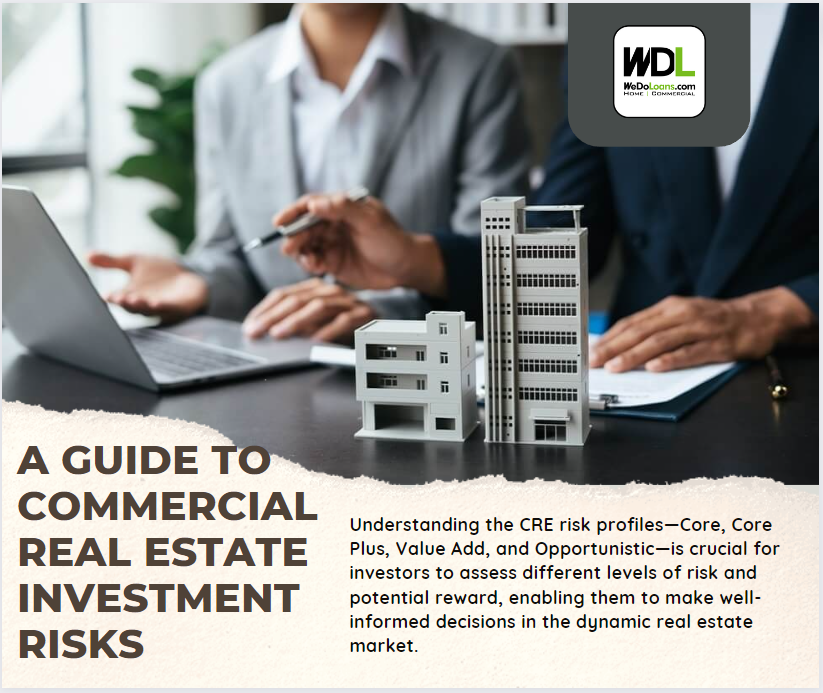
Commercial real estate (CRE) investment involves various risk profiles, which help professionals quickly gauge the risk and potential reward associated with different opportunities. These profiles range from least to most risky: Core, Core Plus, Value Add, and Opportunistic. This classification not only simplifies communication within the industry but also assists investors in aligning their strategies with their risk tolerance.
Evaluating Risk in Real Estate Investments
The level of risk in real estate investments varies, influencing the expected returns. Riskier projects typically offer higher potential returns to compensate for the increased likelihood of loss. Investors must assess various factors, such as asset condition, business strategy post-acquisition, management capabilities, local market dynamics, and broader economic conditions. A common method used to evaluate these investments is the discounted cash flow (DCF) analysis, which calculates key metrics like the Internal Rate of Return (IRR) and Equity Multiple. These figures help investors determine a fair price for the property, reflecting the risk involved.
The Four CRE Risk Profiles Explained
Core
Core assets represent the lowest risk in real estate investments. These are high-quality, well-located, and well-maintained properties with stable, predictable cash flows and low long-term vacancy risks. An example would be a fully leased, Class A office tower in a strong market with long-term leases. Returns for Core investments typically range, with levered IRRs from approximately 6% to 11%.
Core Plus
Core Plus assets are similar to Core but include additional risk factors that might offer higher returns. These could involve near-term tenant vacancies requiring new leasing efforts or locations slightly outside prime markets. The levered IRR for Core Plus investments generally falls between 8% and 13%.
Value Add
This profile involves properties that present opportunities to enhance cash flow and value through significant improvements. These might include addressing deferred maintenance, updating common areas, or optimizing property management. The risk is higher as these strategies may fail to yield the expected enhancements in tenant quality and rental income. Returns in Value Add investments are usually in the range of 12% to 16%.
Opportunistic
Representing the highest risk, Opportunistic investments include development projects or substantial repositioning of vacant buildings. These ventures face uncertainties like approval processes, construction cost overruns, and market changes during the development phase. Returns are correspondingly high to reflect the increased risk, typically starting at 15% and going upwards.
Strategic Application of CRE Risk Profiles
Understanding these risk profiles is crucial for both investors and real estate professionals. They provide a framework for assessing the varying degrees of risk and potential rewards across different CRE investments. By comprehensively analyzing these factors, investors can make informed decisions, balancing their risk appetite with potential financial outcomes. Employing these risk profiles effectively enables investors to navigate the complexities of the real estate market with greater confidence and strategic insight.
